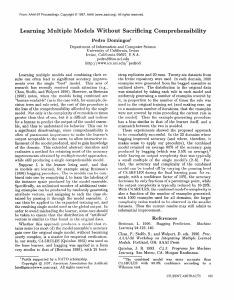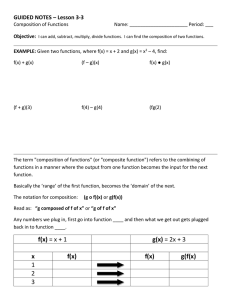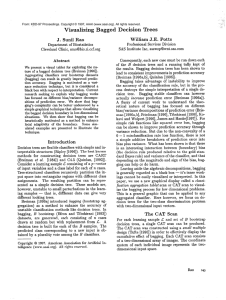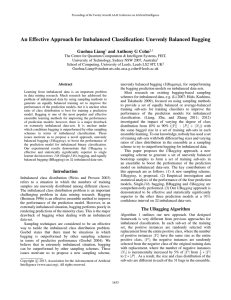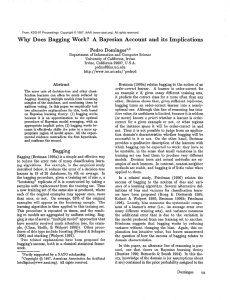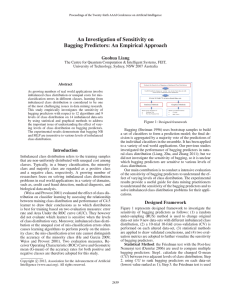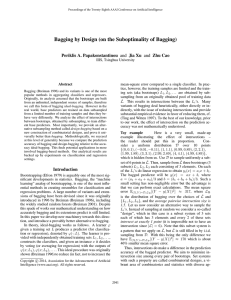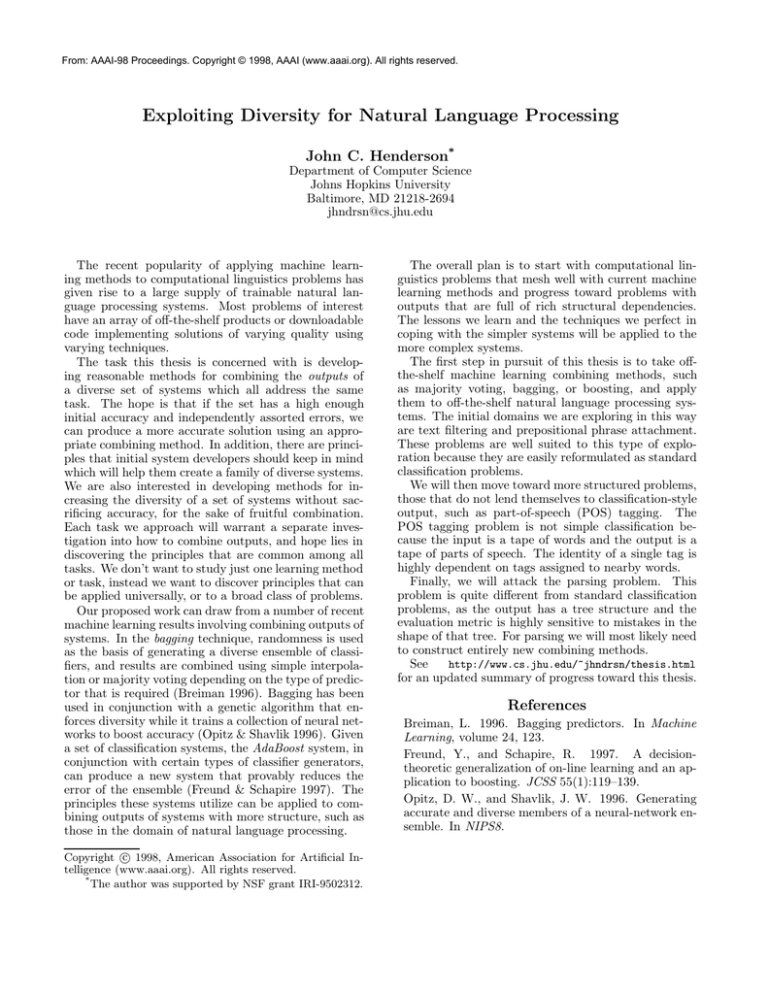
From: AAAI-98 Proceedings. Copyright © 1998, AAAI (www.aaai.org). All rights reserved.
Exploiting Diversity for Natural Language Processing
John C. Henderson*
Department of Computer Science
Johns Hopkins University
Baltimore, MD 21218-2694
jhndrsn@cs.jhu.edu
The recent popularity of applying machine learning methods to computational linguistics problems has
given rise to a large supply of trainable natural language processing systems. Most problems of interest
have an array of off-the-shelf products or downloadable
code implementing solutions of varying quality using
varying techniques.
The task this thesis is concerned with is developing reasonable methods for combining the outputs of
a diverse set of systems which all address the same
task. The hope is that if the set has a high enough
initial accuracy and independently assorted errors, we
can produce a more accurate solution using an appropriate combining method. In addition, there are principles that initial system developers should keep in mind
which will help them create a family of diverse systems.
We are also interested in developing methods for increasing the diversity of a set of systems without sacrificing accuracy, for the sake of fruitful combination.
Each task we approach will warrant a separate investigation into how to combine outputs, and hope lies in
discovering the principles that are common among all
tasks. We don’t want to study just one learning method
or task, instead we want to discover principles that can
be applied universally, or to a broad class of problems.
Our proposed work can draw from a number of recent
machine learning results involving combining outputs of
systems. In the bagging technique, randomness is used
as the basis of generating a diverse ensemble of classifiers, and results are combined using simple interpolation or majority voting depending on the type of predictor that is required (Breiman 1996). Bagging has been
used in conjunction with a genetic algorithm that enforces diversity while it trains a collection of neural networks to boost accuracy (Opitz & Shavlik 1996). Given
a set of classification systems, the AdaBoost system, in
conjunction with certain types of classifier generators,
can produce a new system that provably reduces the
error of the ensemble (Freund & Schapire 1997). The
principles these systems utilize can be applied to combining outputs of systems with more structure, such as
those in the domain of natural language processing.
c 1998, American Association for Artificial InCopyright telligence (www.aaai.org). All rights reserved.
*
The author was supported by NSF grant IRI-9502312.
The overall plan is to start with computational linguistics problems that mesh well with current machine
learning methods and progress toward problems with
outputs that are full of rich structural dependencies.
The lessons we learn and the techniques we perfect in
coping with the simpler systems will be applied to the
more complex systems.
The first step in pursuit of this thesis is to take offthe-shelf machine learning combining methods, such
as majority voting, bagging, or boosting, and apply
them to off-the-shelf natural language processing systems. The initial domains we are exploring in this way
are text filtering and prepositional phrase attachment.
These problems are well suited to this type of exploration because they are easily reformulated as standard
classification problems.
We will then move toward more structured problems,
those that do not lend themselves to classification-style
output, such as part-of-speech (POS) tagging. The
POS tagging problem is not simple classification because the input is a tape of words and the output is a
tape of parts of speech. The identity of a single tag is
highly dependent on tags assigned to nearby words.
Finally, we will attack the parsing problem. This
problem is quite different from standard classification
problems, as the output has a tree structure and the
evaluation metric is highly sensitive to mistakes in the
shape of that tree. For parsing we will most likely need
to construct entirely new combining methods.
See
http://www.cs.jhu.edu/~jhndrsn/thesis.html
for an updated summary of progress toward this thesis.
References
Breiman, L. 1996. Bagging predictors. In Machine
Learning, volume 24, 123.
Freund, Y., and Schapire, R. 1997. A decisiontheoretic generalization of on-line learning and an application to boosting. JCSS 55(1):119–139.
Opitz, D. W., and Shavlik, J. W. 1996. Generating
accurate and diverse members of a neural-network ensemble. In NIPS8.

